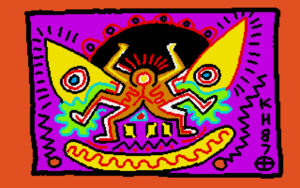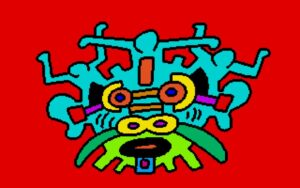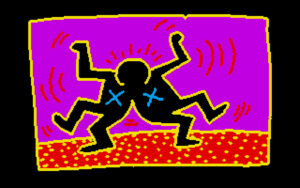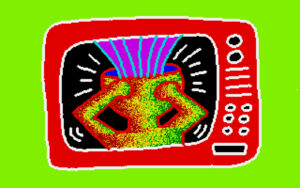
The auction of Keith Haring’s previously unseen computer drawings as NFTs (Non-Fungible Tokens) is an intriguing convergence of traditional art, digital media, and contemporary investment trends. This event not only serves as a testament to Haring’s pioneering spirit but also offers several layers of interpretation and discussion.
Technological Evolution and Art
Keith Haring, like his contemporary Andy Warhol, was a pioneer in adopting new technologies for artistic expression. The fact that these drawings were created on an Amiga personal computer in the 1980s speaks to Haring’s foresight into the impact of technology on art. It’s fascinating that he was engaging with digital art long before it became a mainstream medium. As we live in an era where digital art is increasingly recognized and valued, Haring’s early exploration feels particularly prophetic.

Authenticity and Ownership in the Digital Age
Turning these drawings into NFTs raises questions about ownership, authenticity, and the unique value attributed to digital works. The process of minting these artworks on the Ethereum blockchain will give buyers a sense of direct ownership and provenance, something that has historically been a challenge with digital art.
Cultural Capital and Investment Trends
NFTs have become a significant trend in art collection, as seen by the high-profile auctions that have occurred, including those involving artworks by Andy Warhol. The valuation of these Keith Haring pieces—estimated between $200,000 to $500,000 each—suggests a strong faith in both Haring’s enduring artistic significance and the ongoing value of NFTs as a form of art collection.

Intersection of Traditional and Digital Communities
The event seems to be a part of the broader conversation about the integration of traditional art worlds with emergent digital communities. Keith Haring’s ethos of making art accessible aligns well with the principles of the Web3 community, which aims to democratize ownership and access in the digital realm.

Final Thoughts
Ultimately, this auction event serves as an example of how technology is shaping, and being shaped by, our cultural and aesthetic experiences. It connects past, present, and future in a way that reflects on how we engage with art across different mediums and economic models. It’s an exciting development that could potentially shape the future of art, collection, and investment.


